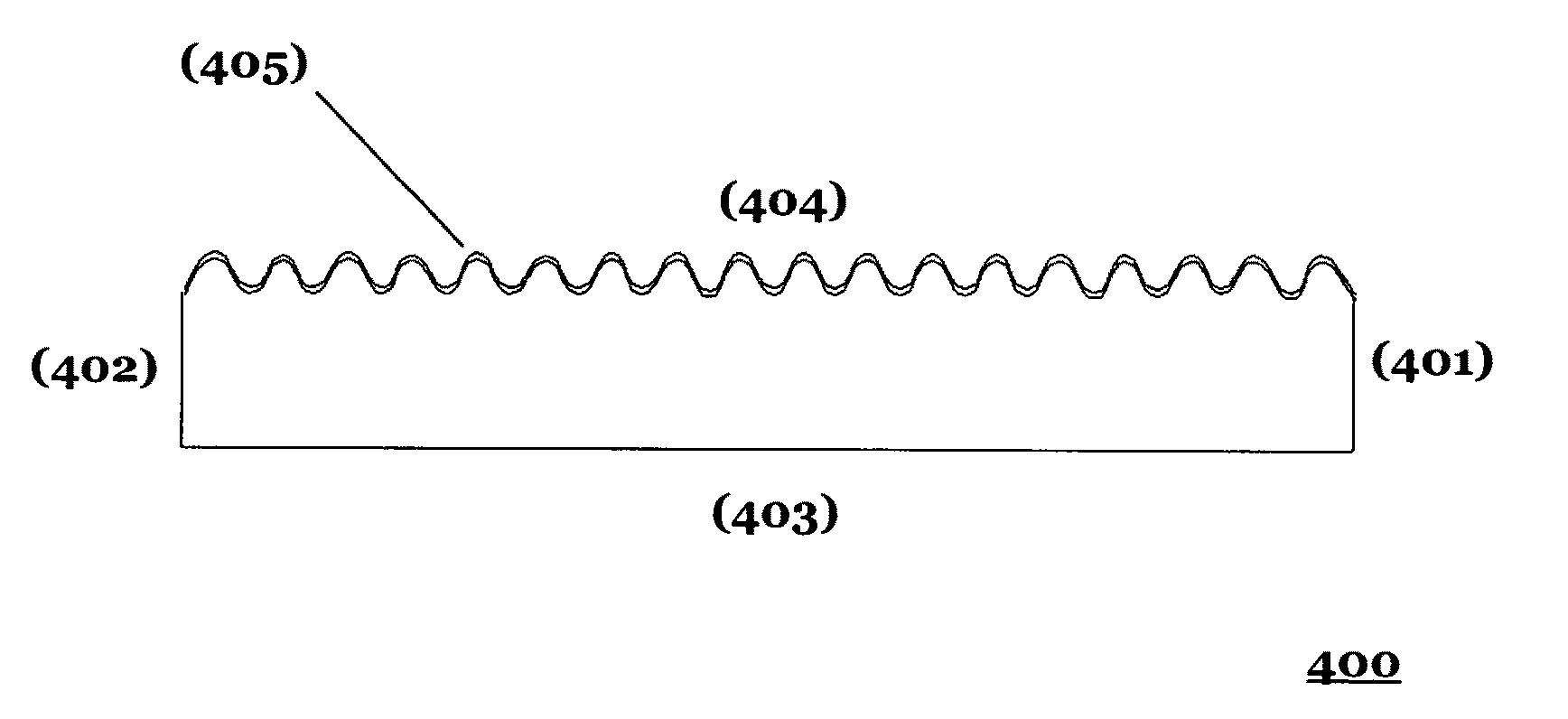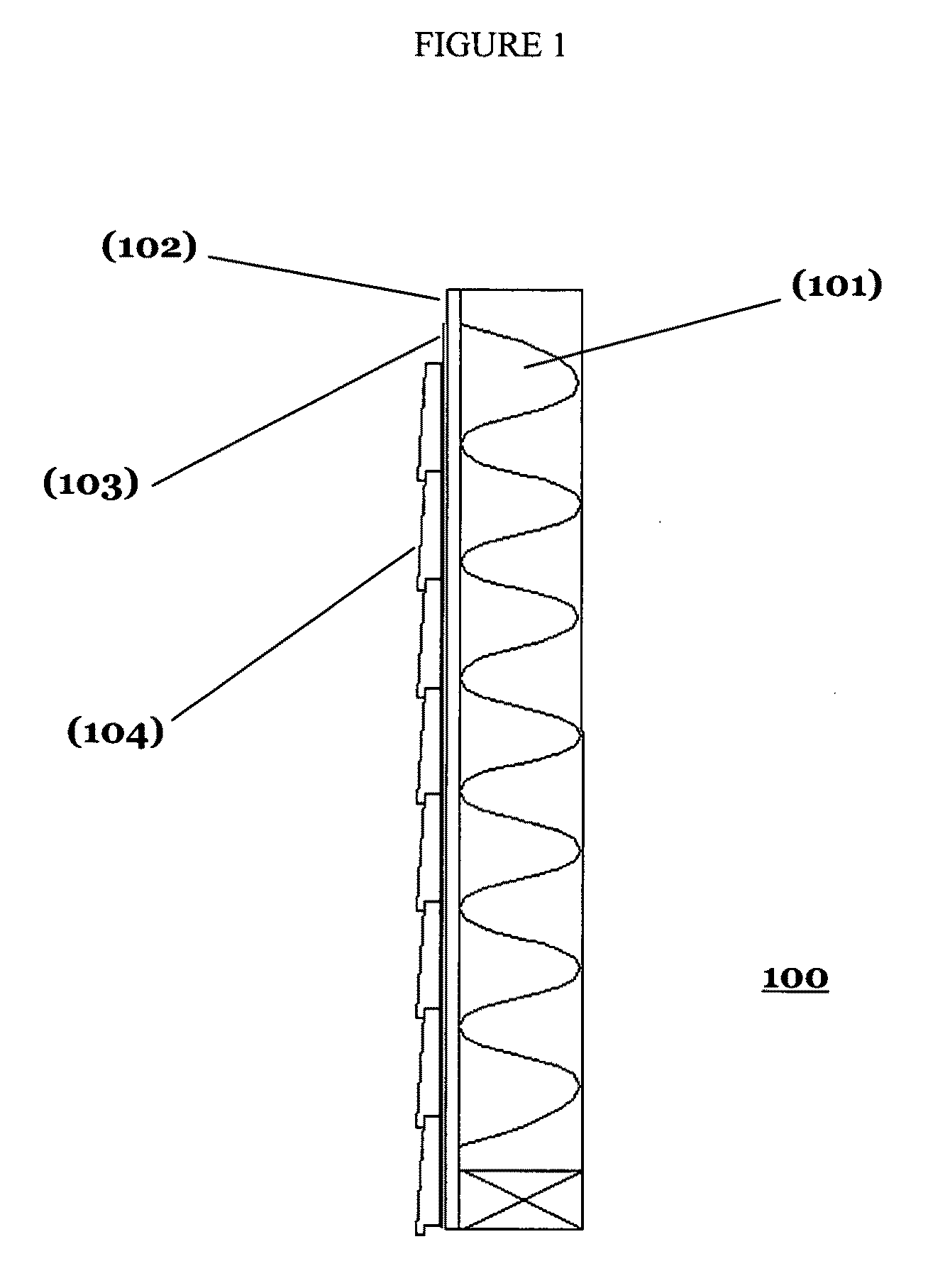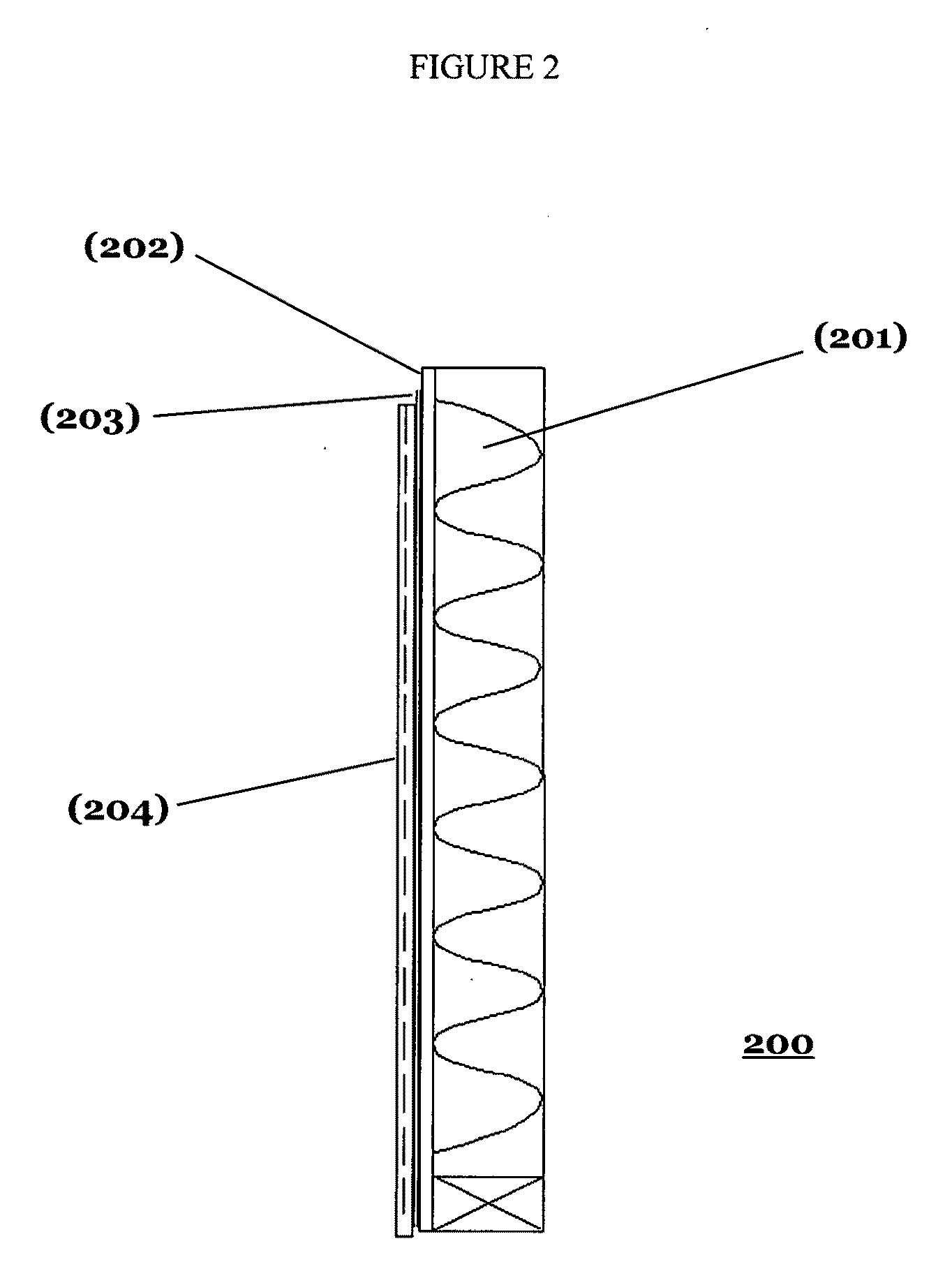Structural boards having integrated water drainage channels
a technology of structural boards and water drainage channels, which is applied in the direction of instruments, other domestic objects, transportation and packaging, etc., can solve the problems of wood-constructed building walls, severe sheathing degradation in systems, and material being susceptible to longer term water damage, so as to improve the water resistant property of structural boards, labor cost and installation time may be significantly reduced
- Summary
- Abstract
- Description
- Claims
- Application Information
AI Technical Summary
Benefits of technology
Problems solved by technology
Method used
Image
Examples
example 1
[0048]A specialized water-resistant release barrier coated kraft paper is treated on the opposite side to the release barrier coating with an adhesive resin compatible with OSB bonding systems, for example phenolic-formaldehyde based adhesive bonding resins available from Georgia-Pacific Resins under the trademark RESI-LAM® laminating resin. A pressing plate imparting the grooved pattern shown in FIG. 4 is utilized. Sheet is bonded to the panel simultaneously during the heating OSB pressing process resulting in a textured surface with about a peak to valley difference of 50 mils. Thus, creating a three dimensional channel in which water trapped or forced from wind driven rain or other means behind the finished building siding material (i.e. vinyl or wood siding, stone veneer, stucco systems, and the like) and has a means for escape via gravity down the wall construction to the foundation level eliminating the potential for water-wood based sheathing product structural degradation re...
example 2
[0049]Following the procedure of Example 1 for the lamination of a specialized kraft barrier sheet to an OSB panel, heat pressed laminations are performed utilizing a textured press plate imparting the water drainage channels to various groove depths and designs during the lamination. Deeper channels and extended three dimensional shapes impart higher stresses on the paper component. Higher stresses can lead to barrier failure and compromise the panel system liquid water repellency. When about a 32 mils groove depth is reached using a pattern imparted in that of FIG. 4, the traditional kraft based papers with about less than about 2 to 3% stretch value fail and form large cracks along the direction of the groove. However, when an extensible kraft paper with greater than about 20 to 25% stretch is utilized large cracks were avoided at these deeper groove depths. See FIGS. 3 and 4. Avoiding cracks is important as to maintain the liquid water repellency factor of the specialized releas...
PUM
| Property | Measurement | Unit |
|---|---|---|
| Water resistance | aaaaa | aaaaa |
Abstract
Description
Claims
Application Information
 Login to View More
Login to View More - R&D
- Intellectual Property
- Life Sciences
- Materials
- Tech Scout
- Unparalleled Data Quality
- Higher Quality Content
- 60% Fewer Hallucinations
Browse by: Latest US Patents, China's latest patents, Technical Efficacy Thesaurus, Application Domain, Technology Topic, Popular Technical Reports.
© 2025 PatSnap. All rights reserved.Legal|Privacy policy|Modern Slavery Act Transparency Statement|Sitemap|About US| Contact US: help@patsnap.com



